When you go to South Korea, the city of Gyeongju in the southeast of the country should not be missed. This is true paradise for people who love history. From the first until the tenth century Gyeongju was the most important place in the Kingdom of Silla. Many historical sights dates back to this period which led to a position on the Unesco World Heritage List in 2000. In this Travel Guide you will learn more about Gyeongju and it’s fascinating history.
This Travel Guide to Gyeongju contains affiliate links. This means that if you make a booking through one of the links on this website, Travel4history gets a small compensation for it. This does not cost you anything extra by the way!
In this article
Plan your trip
- Accommodation: Hotels in Gyeongju
- Activities: Tours & Tickets
- Transport: Flight Tickets, Bus Tickets or Train Tickets
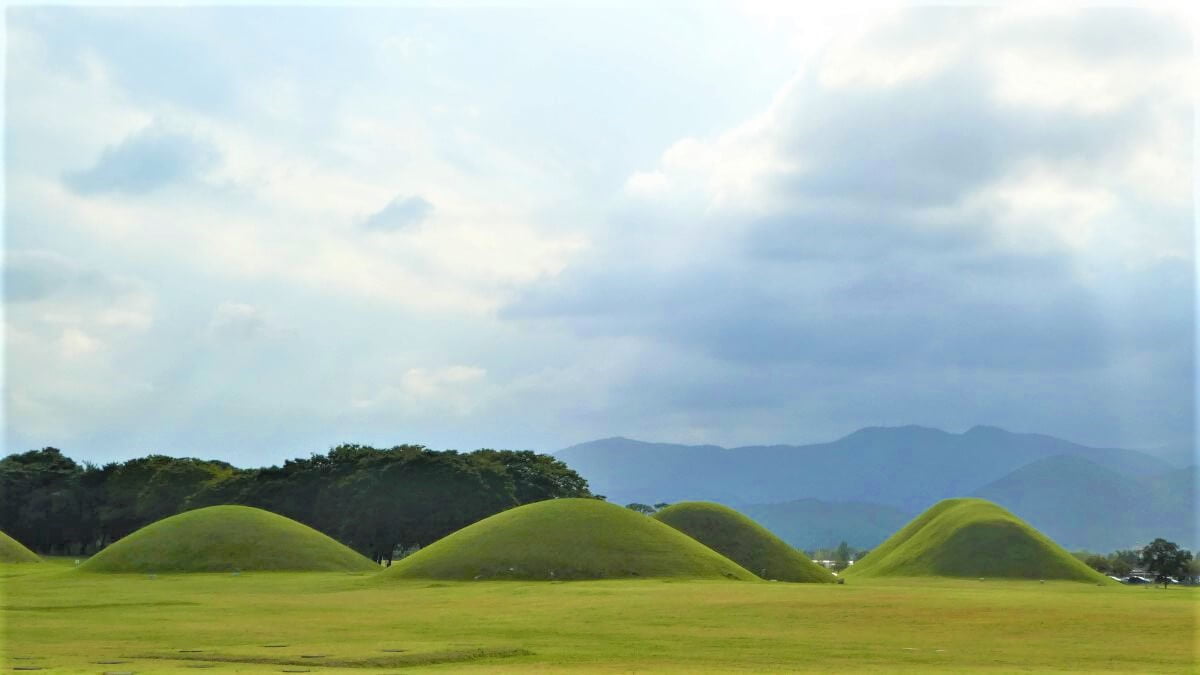
History of Gyeongju – A journey into the past
Before you go, this is what you should know about the past of Gyeongju. For more than 1000 years this city was an important place for kings to rule the empire. It started in 57 B.C. as a small kingdom called Saro, but changed it’s name shorty after to Silla.
Around 500 A.D. things started to change. Buddhism became the official religion and in 668 another kingdom called Baekje (or Paekche) was defeated by the army of Silla. In a shortly period, also parts of the third empire, Goguryo was taken by Silla. This was the precursor of what we now call North and South Korea together (okay not exactly but almost).
Many of the historical sights you will see are from the eighth till tenth century. For example, the Bulguksa Temple and the nearby Seokguram Cave were built. You will read more about it later. In the tenth century the area of Gyeongju consisted of 1 million inhabitants. That was really big for a place in our planet. Today the population is approximately 300.000 people.
Around 900 the power of the empire was decaying more and more. Local rulers in the area and the peasant population rebelled against the king, which finally led to the fall of the Kingdom of Silla in 918.
Sightseeing – 8 interesting places in Gyeongju
Now you know more about the history of the city and the Kingdom of Silla. Most of these sites are close to the city center and can be reached by foot. However, the best way to explore the city is by bicycle. Here below you will find 8 interesting places you should visit…
1. Visit the Bulguksa Temple
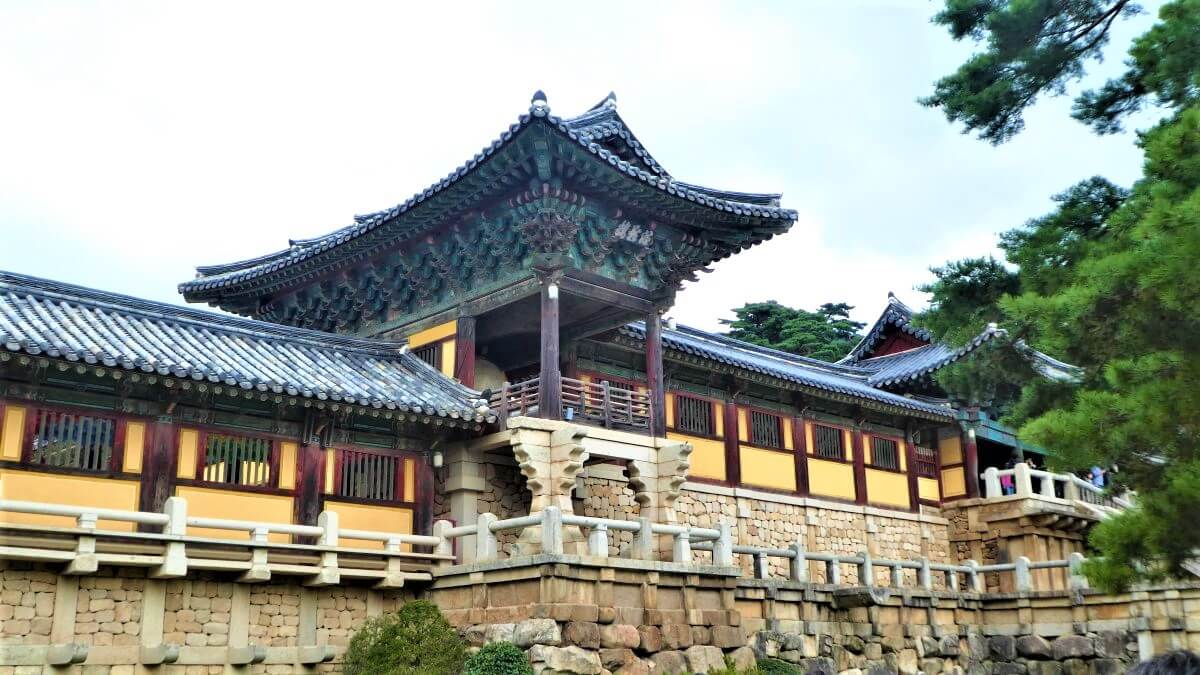
The Bulguksa temple is located about 15 kilometers southeast of Gyeongju. It is one of the most important temples of South Korea. For example, in 1966 a wooden block with a sutra (a Buddhist rhyme verse) from the eighth century was found. The present building dates from the 19th century and just after the Korean War it was thoroughly renovated. This led to the discovery of the special wooden sutra. If you would like to visit the Bulguksa temple, access to it costs 5,000 won. It is easy to reach by bus 10 or 11 from Gyeongju Station.
Temple Stay? In South Korea it is possible to walk and stay overnight at several temples. For more information take a look at the website of the Temple Stay.
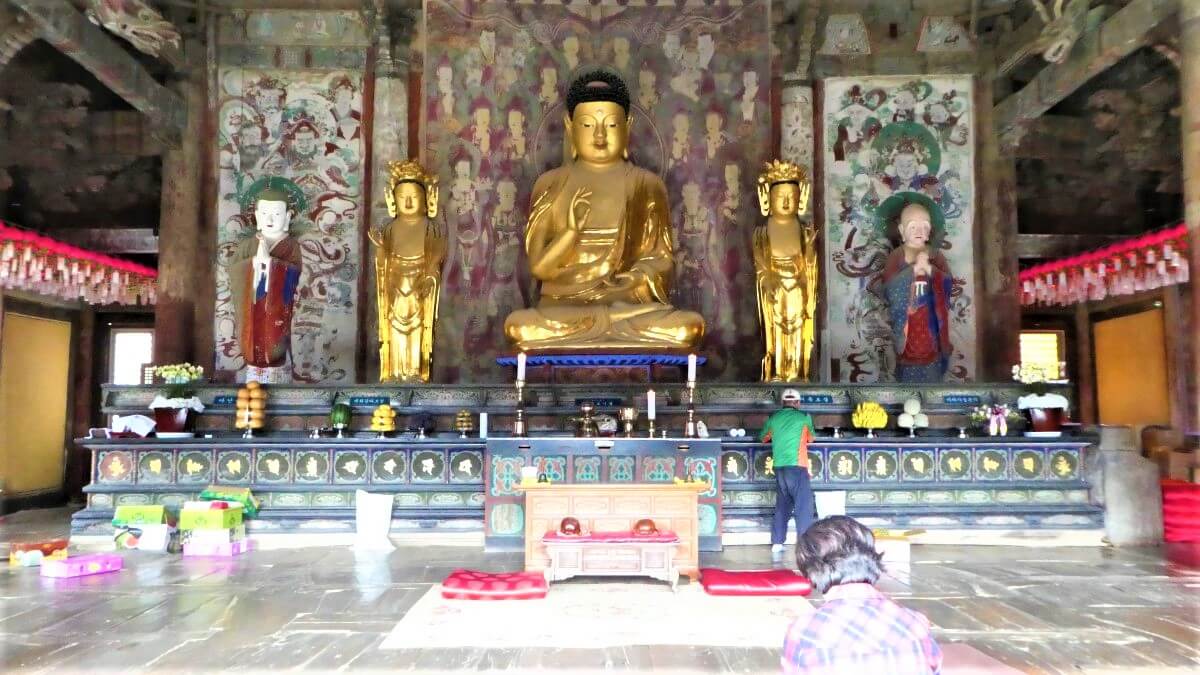
2. Discover the Seokguram grotto
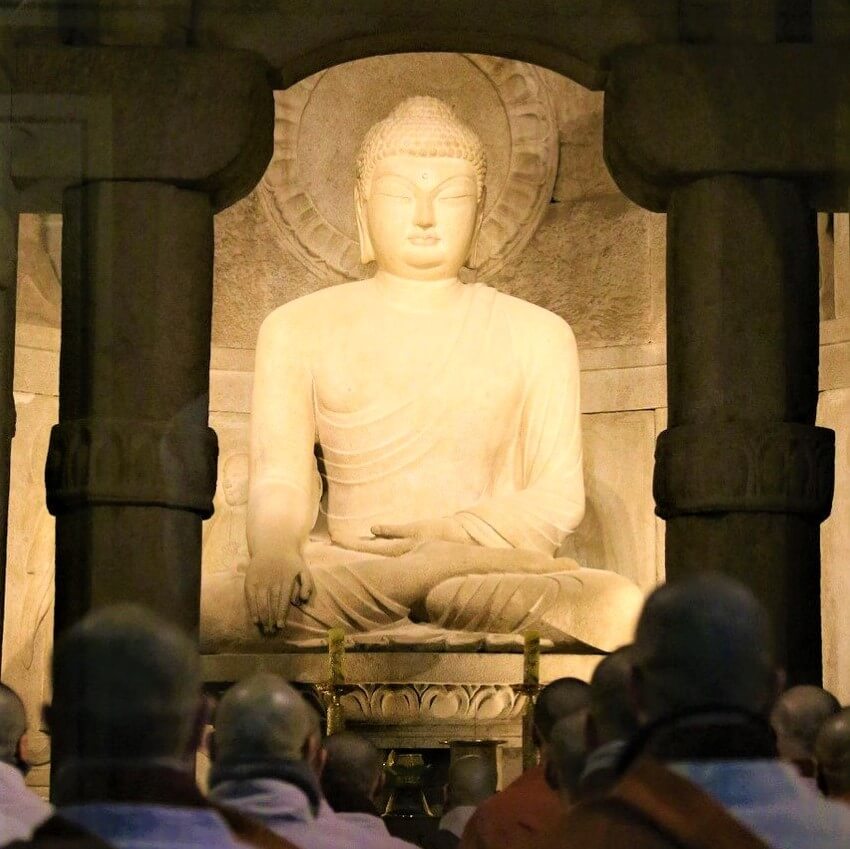
When you visit the Bulguksa Temple you might want to take a look at the nearby Seokguram Grotto. This cave was carved in the eighth century in Mount Toham and is reached by a 3km hike up the mountain. Inside you can visit the beautiful Buddha like you see on the picture above. It remained untouched for over 1000 years, until Japan invaded Korea in 1910 and damaged the statue. The Buddha has been restored three times and is absolutely a beauty in a cave. To get there take bus 12 from the Bulguksa temple. Entrance to the cave costs 6,000 won.
3. Tomb of King Naemul
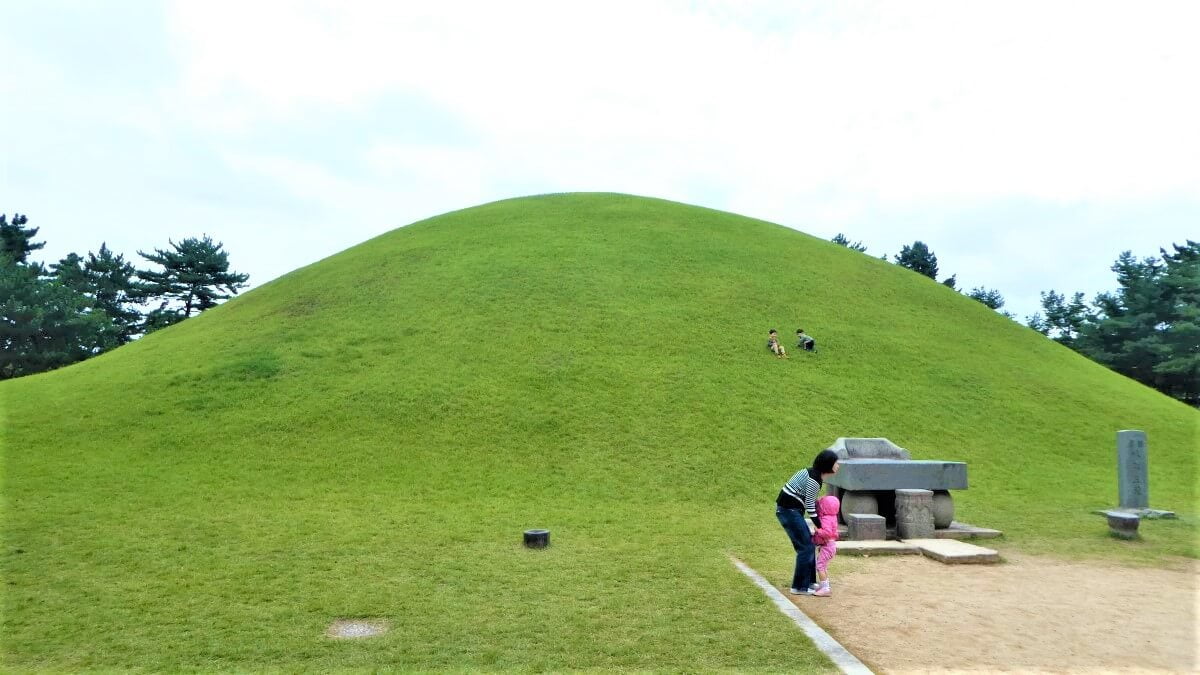
Around Gyeongju you will find a lot of tombs. One of them is of King Naemul (356-402). He was the seventeenth ruler of the Kingdom of Silla. Little else is known about this monarch. When the empire was attacked during his reign by Japan and Baekje he led the people to victory. This was the start of the growth of the Kingdom of Silla. Another important thing was during his reign the Korean writing originated from heavy Chinese influences..
4. Cheomseongdae Observatory
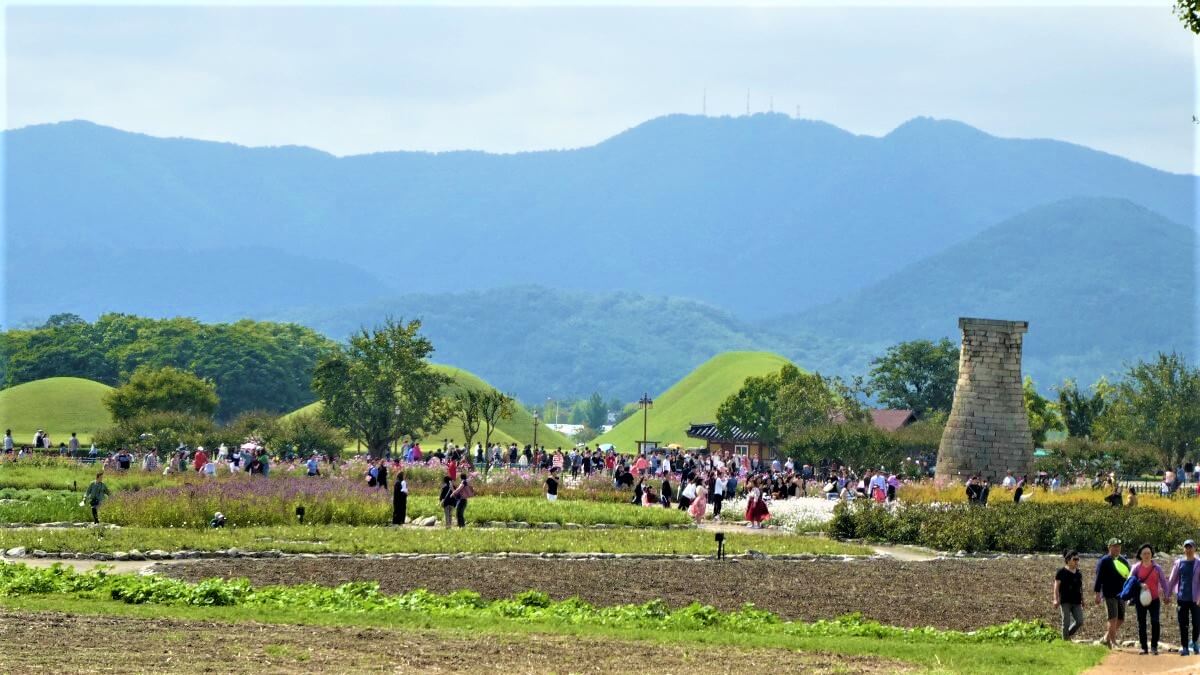
Cheomseongdae is the oldest astronomical observatory in East Asia. It was built between 632 and 646 A.D. and is also a UNESCO World Heritage Site. It looks like an easy shaped tower, but is full of symbolism. The base of Cheomseongdae observatory consists of 12 stones: every month of the year. From the bottom to top it has 30 layers, which means every day of a month. And finally it is made of 366 stones: well you can guess what it means (okay, minus one please).
5. Tumuli-gongwon and the tomb of Cheonmachong
The Tumuli-gongwon, or Tumuli Park is located close to the city center and 23 members of the Royal famliy are buried here. The most famous one is of king Cheonmachong. The Cheonmachong Tomb is referred to as the “Heavenly Horse Tomb” because of a horse painting called Cheonmado. This painting is the very first artwork excavated in Korea coming from an ancient tomb. This underground chamber became a host to a total of 11,526 artifacts with a wooden coffin at the center. Access to the tombs and the Tumuli Park costs 3,000 won.
6. Gyeongju National Museum
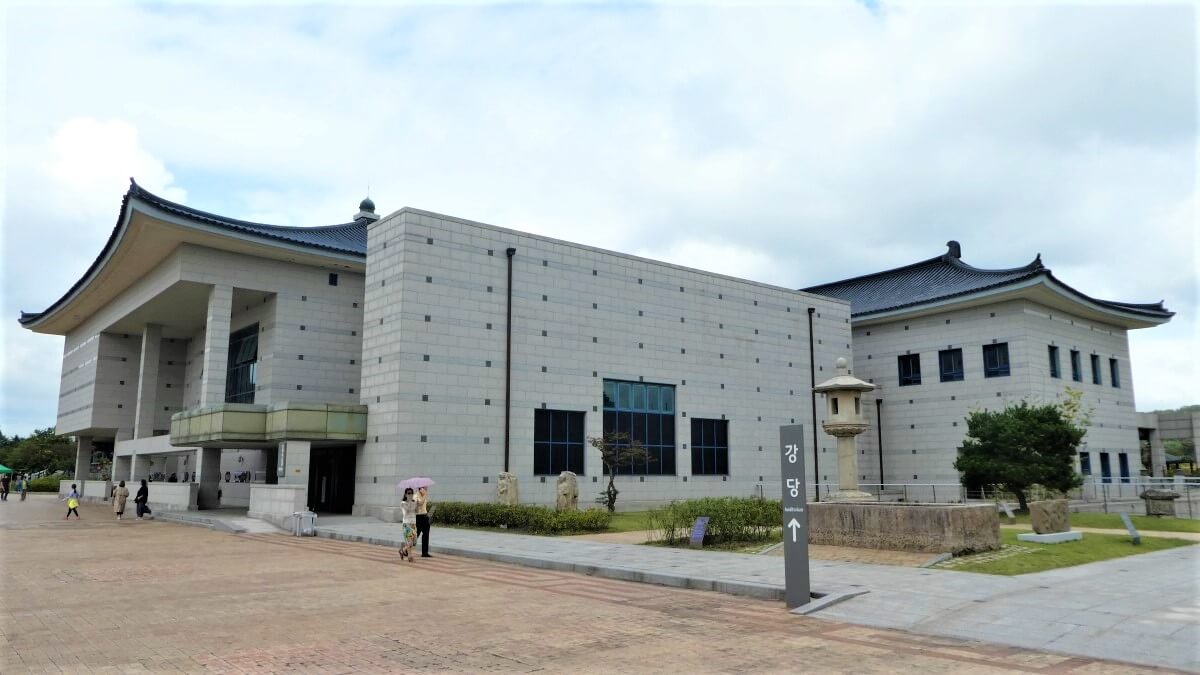
Gyeongju National Museum is definitely worth a visit, as it holds a fine collection of objects from the Silla Kingdom. You can choose out of 5 exhibitions: the History gallery, Silla art gallery, Wolji gallery, Silla storage and the Outdoor Exhibition. And the best thing: it is all for free! Don’t miss the Emile Bell outside, the largest in Korea. Inside the museum you will find statues, crowns of monarch, artefacts and a lot more. The museum is too small for all the objects they found it the area. Gyeongju National Museum is open every day from 10 am till 6/7 pm.
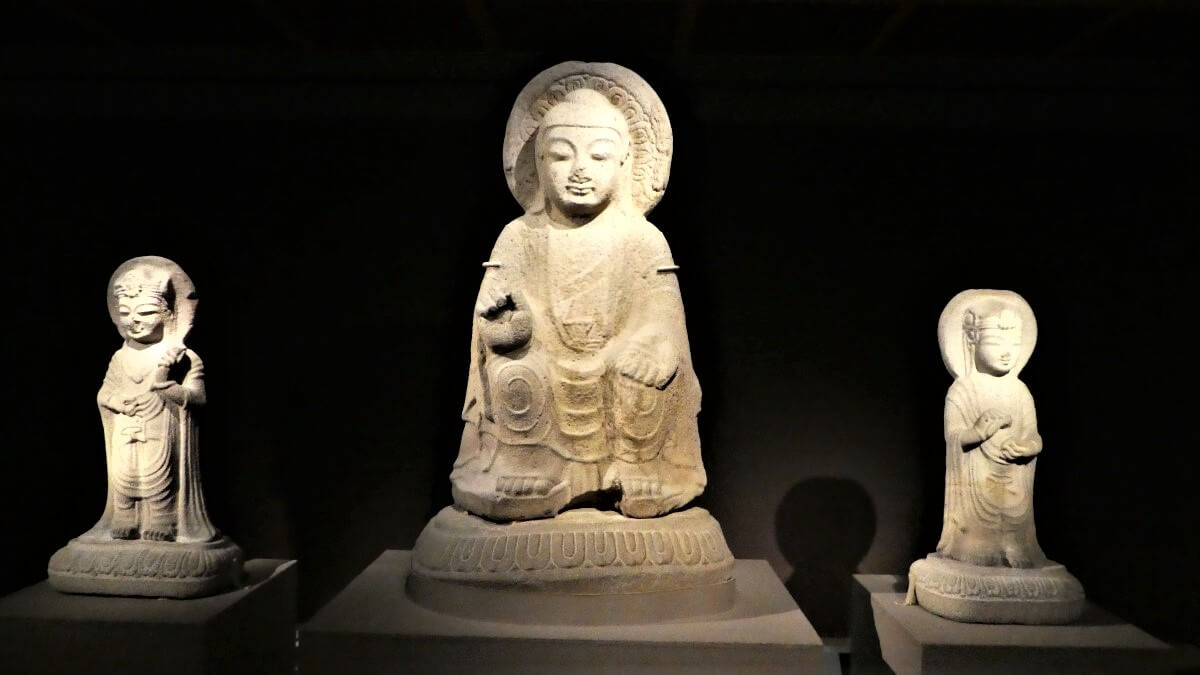
7. Donggung Palace and Wolji Pond
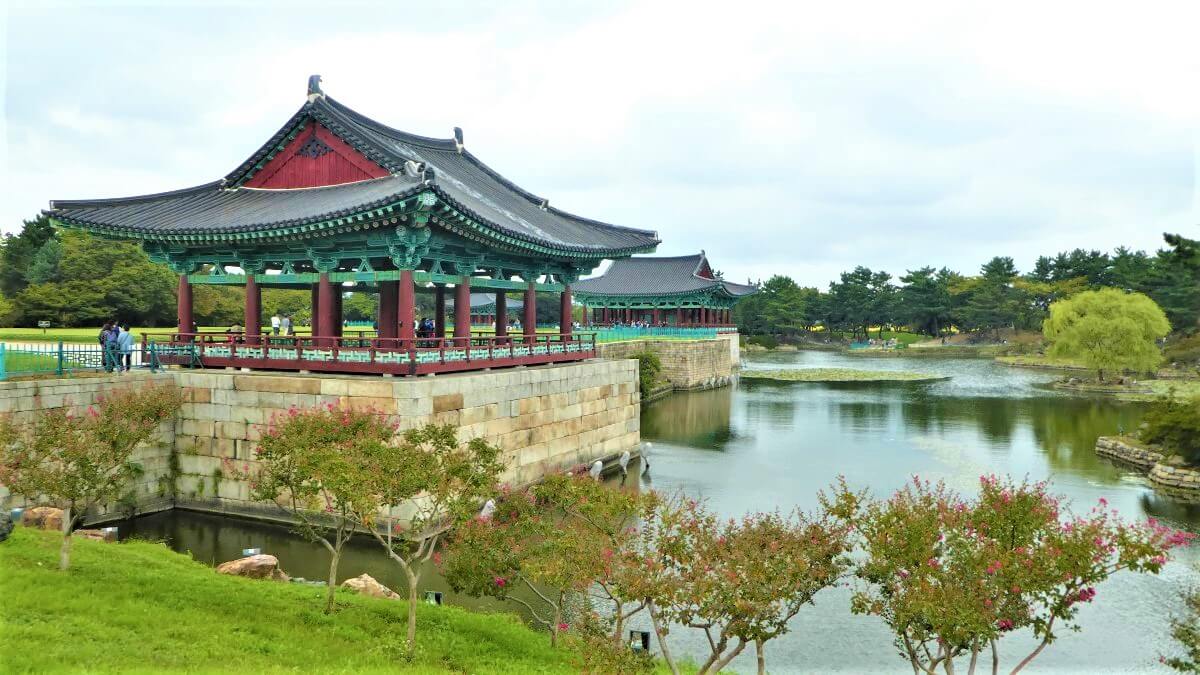
Close to the Gyeongju National Museum you will find Donggung Palace en Wolji Pond. This part of Gyeongju was officially the site of the former palace of the kingdom. It is also called Anapji Pond and is a beautiful park with a number of ruins, with beautiful gardens and renovated buildings. The park was constructed in 674 A.D. by order of king Munmu. It contains 3 little islands and by night you can take some wonderful photos, like the featured image on top of this travel guide. Entrance to the park costs 3,000 won.
8. Climb Mount Namsan
If you still have time left and you would like to do a long hike, go to Mount Namsan in the south of Gyeongju. A walk up the mountain will take some hours, but you will pass through a lot of historical temples and shrines. And on top there is a wonderful view of Gyeongju and it’s beautiful area. Take bus 500 from the train station which will bring you ti the foot of the mountain.
More information you will find at the website Fork and Foot: Climbing Mt. Namsan.
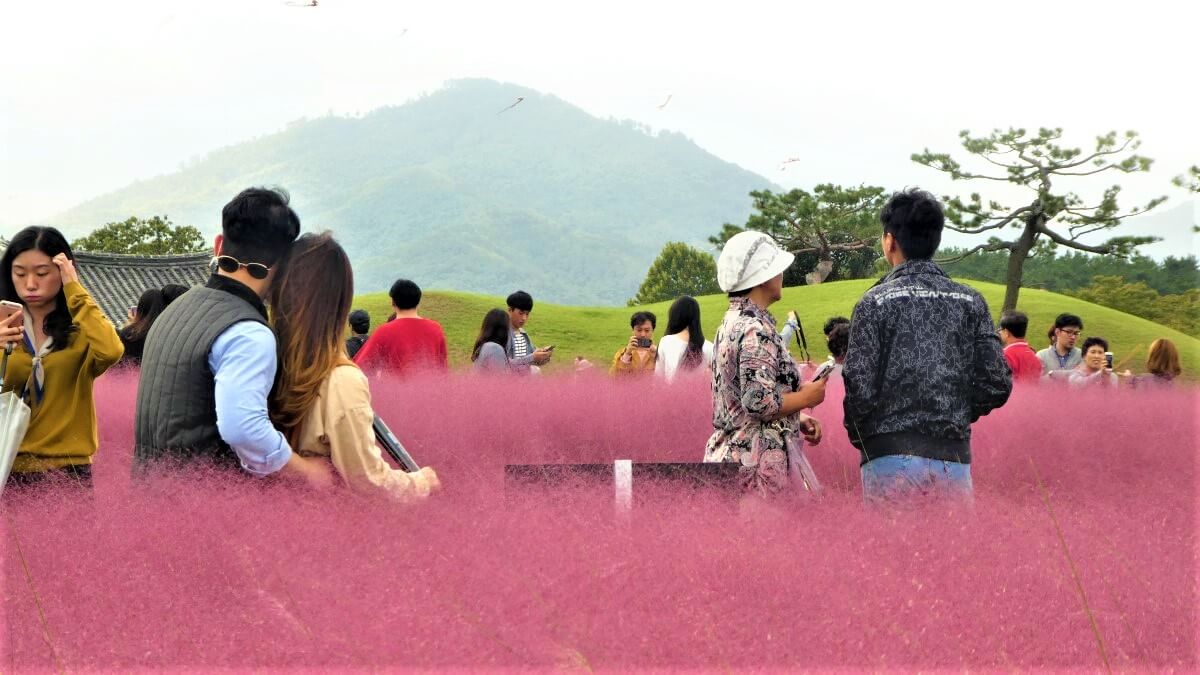
Accommodation – Where to stay in Gyeongju?
The best place to stay in Gyeongju is west of the train station. Most places of interest are located in the south of the city, which is within walking distance if you stay in that area. For a good exploration of the surroundings you can’t avoid using the bus or a bicycle or mountainbike. A full day in Gyeongju is okay, but if you want to explore the area my advice would be at least two days!
Looking for accommodation? Click here for hotels or guesthouses in Gyeongju
Tip: For the more exclusive hotels such as the Hilton Hotel are located 6 kilometers east of the city near Lake Bomun.
Transportation – How to get to Gyeongju?
By plane: Gyeongju itself has no airport. But in both Daegu (west), Pohang (north) and Ulsan (south) there are many daily rural flights to destinations like Seoul and Jeju Island. Probably the best option is Busan Gimhae International Airport for the best fares and for a continuation of your trip to other Asian countries.
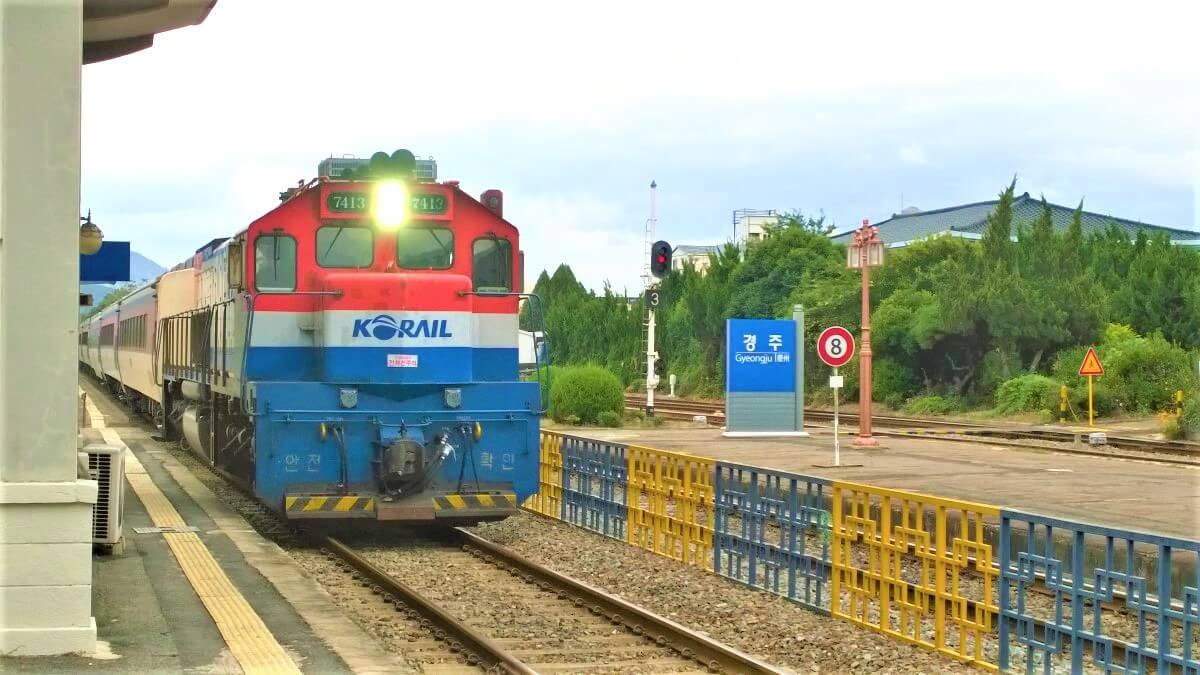
Train: The main station of the city is Gyeongju Station. From here many trains depart daily to Busan in the south or to Andong in the north. There is also a high-speed line, the KTC. This departs from Singyeongju Station, in the northwest of the city about 3 kilometers from the center. On the website of Korail you can find a lot of information about departure times to other places in South Korea.
Bus: The Intercity Bus Station is located in the west of the city, about 2 kilometers from the train station. From here many buses go daily to many places in South Korea. For example, every 45 minutes buses go to Seoul (20 dollars, 4 hours) or to Busan (1 hour).
Website for long-distance buses!
For more information about Intercity buses, take a look at the website of Kobus. It is actually in English and it would be possible to buy tickets online. However, experience shows that there is always a place in the bus.
Next Destination in South Korea?
Continue your trip through South Korea to Busan, Andong or Daegu.
This travel guide about Gyeongju is just a tip of the iceberg of what you can do and see in and around this historical city. Do you have more amazing tips, remarks or ideas, please feel free to leave a message below.